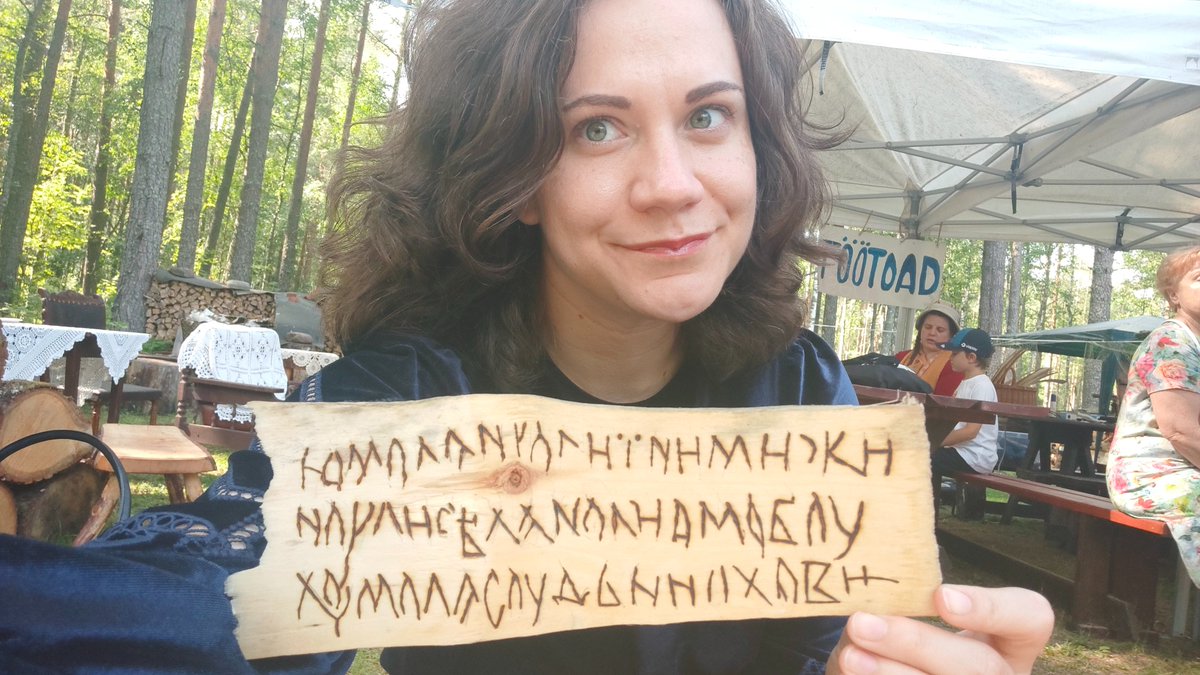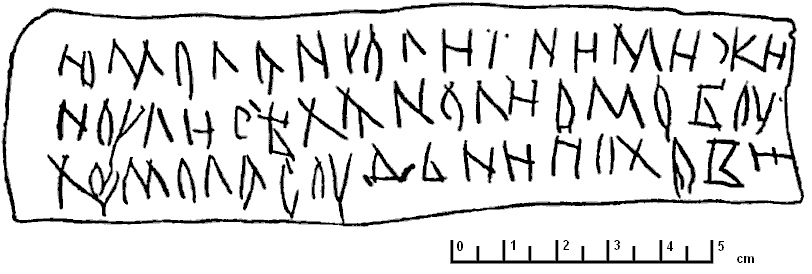OK I'm cranky and annoyed because somebody's wrong on the Internet, so here's a thread about Hungarians.
Why Hungarians are not so big on being a "Finno-Ugric nation", specifically. And why they think they're Huns instead.
Gird your loins, as Nigel would say. 🇭🇺
Why Hungarians are not so big on being a "Finno-Ugric nation", specifically. And why they think they're Huns instead.
Gird your loins, as Nigel would say. 🇭🇺
I'm often amazed how little even Finns and Estonians know about Hungarians' resistence to being Finno-Ugric.
But it's true: though by far the most populous F-U nation (get used to this abbreviation), many Hungarians are unsure at best, passionate haters of the mere idea at worst.
But it's true: though by far the most populous F-U nation (get used to this abbreviation), many Hungarians are unsure at best, passionate haters of the mere idea at worst.

Why? Well let's go back in time to the earliest mentions of Hungarians, in the 9th century AD. (Gonna use my slides from 6 years ago when I taught the subject in Budapest.)
This is when the 7 tribes of the Hungarians, led by Álmos then Árpád, conquered the Carpathian Basin.
This is when the 7 tribes of the Hungarians, led by Álmos then Árpád, conquered the Carpathian Basin.

Byzantine chronicles simply call Hungarians Turks, or Oungroi, or Ungri, which is likely from "On-Ogur", ie. the tribal confederacy of Bulgars which Hungarians likely belonged to.
The Italian and German versions of Hungarian (Ungheria, Ungarn) don't have the initial H.
The Italian and German versions of Hungarian (Ungheria, Ungarn) don't have the initial H.

Later, some high medieval sources started calling Hungarians Avari or Huni, inspired by previous peoples inhabiting the same area. Hungri or Hungari were first used in the late 1100s, likely to establish parallels between the fearsome conqueror Attila and the Hungarians. Call it political motivation, laziness or the human instinct of association.
The idea of a kick-ass conqueror for a forefather somehow appealed to the Hungarian kings. So they fully leaned into it, and all the early Hungarian chronicles took it for a fact. 

This is also when the myth of Hunor and Magor (two brothers chasing a magic deer that leads them to the promised land) was established as official lore, establishing Huns and Hungarians (Magyars) as brother nations.
This myth, btw, was quite common among Eurasian steppe nomads.
This myth, btw, was quite common among Eurasian steppe nomads.

The idea of Hun-Hungarian continuity was so strong the first book of Hungarian customary law called Tripartitum (1514) justifies Hungarians' right for the Carpathian basin with it.
It claims Hungarians had full right to "reclaim" their blood brother Huns' land.
It claims Hungarians had full right to "reclaim" their blood brother Huns' land.

During the 17-18th century, all languages of Europe were being categorized. The highest praise was being derived from Latin, Greek or Hebrew, but Hungarian just didn't fit any of these moulds.
We have records of people assuming an affinity with Finnish from the 17th century.
We have records of people assuming an affinity with Finnish from the 17th century.

The first linking with scientific value of Hungarian to F-U languages was János Sajnovics's Demonstratio (1770). Though Sajnovics went to the land of Sámi to observe an astral constellation, he couldn't help but notice similarities of the locals' language with Hungarian. 

Note that this time, historical-comprative linguistics were not a thing yet. Sajnovics usednothing but logic and academic rigor to demonstrate the similarity between Sámi and Hungarian.
The international linguistic scene was elated about Demonstratio.
Hungarians - not so much.
The international linguistic scene was elated about Demonstratio.
Hungarians - not so much.

Sajnovics had a few things against him.
First, he was a Slovak.
Second, in the late 1700s, young Habsburg Joseph II was playing enlightened absolute monarch, ignoring every Hungarian request or custom.
Third, "Herder's prophecy" claiming Hungarians will eventually assimilate into the neighboring Slavs got everyone and their mother freak out about Hungarian survival.
And now comes a Slovak astronomist claiming our language is related with the Sámi, an introverted, underdeveloped people on the edge of the world.
This must be a conspiracy.
First, he was a Slovak.
Second, in the late 1700s, young Habsburg Joseph II was playing enlightened absolute monarch, ignoring every Hungarian request or custom.
Third, "Herder's prophecy" claiming Hungarians will eventually assimilate into the neighboring Slavs got everyone and their mother freak out about Hungarian survival.
And now comes a Slovak astronomist claiming our language is related with the Sámi, an introverted, underdeveloped people on the edge of the world.
This must be a conspiracy.

This is when the rift between popular belief and academia began.
In academic circles, Sajnovics inspired Indo-Europeanists such as Bopp or Rask, expeditions were organized, proto-languages were reconstructed.
But little of this was visible to the average (noble) Hungarian.
In academic circles, Sajnovics inspired Indo-Europeanists such as Bopp or Rask, expeditions were organized, proto-languages were reconstructed.
But little of this was visible to the average (noble) Hungarian.
For Hungarians, this sounded just stupid. Sajnovics's arguments had little weight against the emotional uproar his work caused.
The idea that the "Finno-Ugric theory" was nothing but a Habsburg conspiracy to humiliate Hungarians still persists. I heard it many times.
The idea that the "Finno-Ugric theory" was nothing but a Habsburg conspiracy to humiliate Hungarians still persists. I heard it many times.
It's useful to draw parallels with the Finnish national awakening in the 19th century.
The elites started using Finnish.
Kalevala got published.
The Uralic language family took form.
The scientific establishment of the F-U language tree entwined with the formation of the Finnish (and Estonian, respectively) nation.
The elites started using Finnish.
Kalevala got published.
The Uralic language family took form.
The scientific establishment of the F-U language tree entwined with the formation of the Finnish (and Estonian, respectively) nation.
But Hungary was a thousand-year empire.
All our written sources were clear as day about our link to Attila the Hun. Everyone knew the legend of Hunor and Magor.
Being affiliated with Finns and Sámis and Estonian just didn't make sense.
The frustration with "kin that smells like fish" can be tackled in contemporary novels.
NB we're still talking about times when linguistic affinity was not separated from other aspects of ethnogenesis (genetics, material culture, etc).
All our written sources were clear as day about our link to Attila the Hun. Everyone knew the legend of Hunor and Magor.
Being affiliated with Finns and Sámis and Estonian just didn't make sense.
The frustration with "kin that smells like fish" can be tackled in contemporary novels.
NB we're still talking about times when linguistic affinity was not separated from other aspects of ethnogenesis (genetics, material culture, etc).

In the early 20th century, the Turanism movement in Hungary tried to create a synthesis by linking Finno-Ugrians to the greater Altaic family (Uralo-Altaic theory). There were some Finnish-Hungarian-Estonian common projets (see Livonian house in Mazirbe) and a Hungarian voluntray batallion went to Finland at the Winter War (though didn't get there in time).



Eventually, Hungarian as a Finno-Ugric language became mainstream in the second half of the 20th century.
Finnish-Hungarian bilateral relations were popular.
It almost looked like Hungarians were starting to accept belonging to the F-U family. (Except emigrants.)
Finnish-Hungarian bilateral relations were popular.
It almost looked like Hungarians were starting to accept belonging to the F-U family. (Except emigrants.)
But oh well, the Iron Curtain fell, and free market capitalism was unleashed onto the Eastern block. And wouldn't you know, there was a massive market for alternative Hungarian early history.
Unhinged theories were multiplying like crazy in bookstores then the Internet. The most popular were the Sumerian-Hungarian, Etrusk-Hungarian, Egyptian-Hungarian and of course Martian (yes the planet)-Hungarian affinity theories.
Unhinged theories were multiplying like crazy in bookstores then the Internet. The most popular were the Sumerian-Hungarian, Etrusk-Hungarian, Egyptian-Hungarian and of course Martian (yes the planet)-Hungarian affinity theories.
It was a noble but time-consuming hobby to argue with weirdos about language back then.
The game changed though when Viktor Orbán's government tried to literally rape science by somehow proving Hungarians are at least "not only Finno-Ugrians". It established an entire institute dedicated to researching "the roots of Hungarians" (meanwhile cutting funds from the Hungarian Academy of Science), furnished with people on the fringes of academia, giving platform to their, um, unorthodox theories.
The game changed though when Viktor Orbán's government tried to literally rape science by somehow proving Hungarians are at least "not only Finno-Ugrians". It established an entire institute dedicated to researching "the roots of Hungarians" (meanwhile cutting funds from the Hungarian Academy of Science), furnished with people on the fringes of academia, giving platform to their, um, unorthodox theories.
Seeing this shitshow unfold in the 2010s contributed greatly to me leaving Hungary.
A typical example was when a pro-government librarian argued in an op-ed that since the Finno-Ugric theory is not aligned with what the majority of Hungarians feel to be true, it's the job of academics to bend to the public will.
My colleague and I took that text apart so mercilessly it dominated headlines in mainstream media. index.hu/tudomany/2018/…
A typical example was when a pro-government librarian argued in an op-ed that since the Finno-Ugric theory is not aligned with what the majority of Hungarians feel to be true, it's the job of academics to bend to the public will.
My colleague and I took that text apart so mercilessly it dominated headlines in mainstream media. index.hu/tudomany/2018/…
It's a bit of a pity, because there are actually many major breakouts in early Hungarian research lately, and finally linguistics, genetics and archeology seem to point into the same direction.
Here's my presentation about it in ERM in Estonian.
blog.erm.ee/?p=16188
Here's my presentation about it in ERM in Estonian.
blog.erm.ee/?p=16188
In this political climate, where even school textbooks are being rewritten to present Hungarian's F-U relatedness as a mere possibility, I doubt much will change.
If ever.
Anyways, bottom line: don't hold your breath about Hungary in the F-U movement.
But it has its reasons.
If ever.
Anyways, bottom line: don't hold your breath about Hungary in the F-U movement.
But it has its reasons.
• • •
Missing some Tweet in this thread? You can try to
force a refresh





















